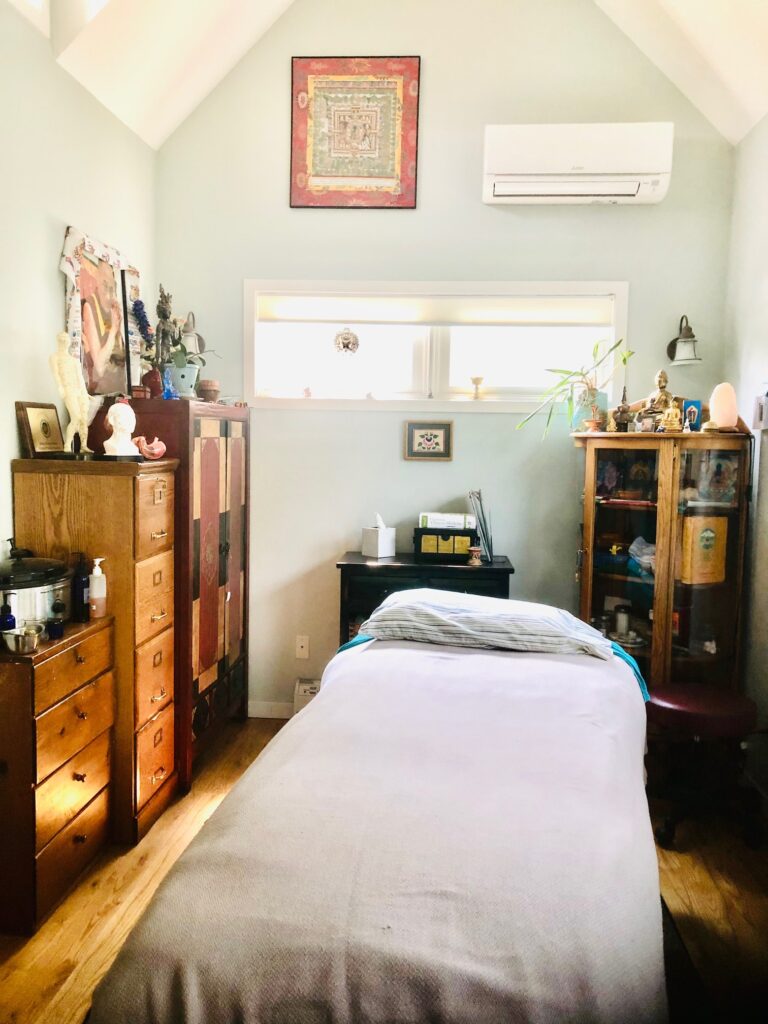By Pearl Zhang
Throughout the twentieth and twenty first centuries, Tibetan medicine, also called Sowa Rigpa (གསོ་བ་རིག་པ་།), has undergone rapid globalization, becoming increasingly popular in the United States and Europe. Typically, those interested in Tibetan medicine pursue it as a supplement to biomedicine (Janes 2002, 281-282). Following the 1959 collapse of the Tibetan government, an increasing number of Tibetan refugees found a home in Dharamshala, India, as well as Europe and America. This contributed to the popularity of Tibetan Buddhism, the appreciation of Tibetan culture, and the practical appeal of Sowa Rigpa in the West (Janes 2002, 283-284).
Established in 2010 in Boulder, Colorado, by Dr. Tsundu Sengye Nyinda, TMD (i.e., Tibetan Medicine Doctor), and Dr. Nashalla G. Nyinda, TMD, the Tibetan Medicine & Holistic Healing Clinic is one of the few Tibetan medicine clinics in the United States. The clinic originally operated from a studio space before moving to a larger facility in Northeast Boulder in 2011 with three rooms where it receives patients from a wide range of cities and backgrounds across the United States.
Patients are often treated using a variety of Buddhist healing techniques such as meditation and Tibetan massage, as well as specialized diets, herbs, rituals, and other behavioral therapies. Overall, each prescription is personalized based on each patients’ needs and their experience with Tibetan Buddhism. Patients who are higher-level Buddhist practitioners are sometimes sent by their teachers for specialized interventions like visualizations and mantra recitations. Patients who are lower-level practitioners or those of entirely different faiths are prescribed simpler therapies such as basic mindfulness practices or other Buddhist mental training, in which sometimes the vocabulary is adjusted for patients to accommodate non-Buddhist religions.
The doctors themselves also use Buddhist practices before and after meeting with patients. Doctors at the clinic regularly perform certain rituals such as the Medicine Buddha (Tib. Sangyé Menla) practice. In this ritual, the practitioner embodies and carries out the deity’s work by saying the Medicine Buddha mantra and taking on the deity’s energy (Dorje 2014). Rituals and mantras dedicated to Tārā, the bodhisattva of compassion, are also regularly practiced (Beyer 1973). In addition, Tibetan medicine doctors often undergo medical and spiritual training that spans many years. For instance, Dr. Nashalla Nyinda, the clinic’s director, has over two decades of practice and training, having studied under several Tibetan medicine doctors at institutions located in the United States (e.g. Shang Shung Institute in Conway, MA, and Naropa University in Boulder, CO), as well as at the Chagpori Tibetan Medical Institute in Darjeeling, India.
Because Tibetan medicine is not yet regulated or widely recognized in the United States, there are certain limitations to what TMDs can do for patients, but this circumstance results in a unique relationship between MDs, TMDs, and patients. Oftentimes, the clinic’s patients will consult with both, receiving prescription drugs and therapies from biomedical doctors and supplemental treatments from the TMDs. Dr. Nyinda describes the ideal relationship between the two types of medical professionals as one in which the TMDs and MDs can collaborate together and clearly communicate on treatments for their shared patient in order to provide the best care possible.
Media

Clinic entrance, exterior view 
Intake area for patient and practitioner 
Clinical room with massage table 
Thangka scroll depicting the Medicine Buddha 
Shelf with jars of medical ingredients
Scholarly Sources
- Beyer, Stephan. 1973. The Cult of Tara: Magic and Ritual in Tibet. Berkeley: University of California Press.
- Gyurme Dorje. 2014. “The Buddhas of Medicine.” In Bodies in Balance: The Art of Tibetan Medicine. Seattle: University of Washington Press.
- Janes, Craig R. 2002. “Buddhism, Science, and Market: The Globalisation of Tibetan Medicine.” Anthropology & Medicine 9 (3): 281–84.
Credits
This article is by Pearl Zhang with material from an interview with Dr. Nashalla Nyinda TMD, conducted by Pierce Salguero in 2015.
